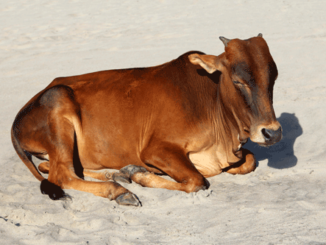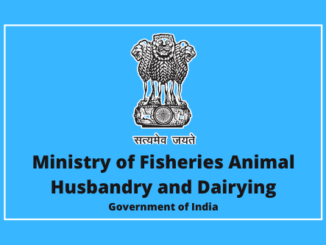Animals are susceptible to a wide range of diseases caused by viruses, bacteria, fungi and parasites. Overcrowding, unmanaged waste, animal illness, infection and stress among dairy farm diminish animal’s ability to fend off disease and enhance the occurrence of outbreaks and spread. Outbreaks and disease spread put dairy farm at significant financial risk like decrease in overall production and deaths of animals. There are many infectious and transmissible diseases identified, which affect dairy farm animals around the globe. A number of financial risks are associated with animal diseases such as outbreaks of any disease can result in costly livestock losses as a result of both infection and the intentional culling of flocks/herds. Along with this some other problems occur like supply chain interruptions, cessation of import/export activity, decreased consumer demand, diminished market prices and significant reputational damage. But now vaccines are available for many of these diseases, making them preventable or for reducing the losses or long term consequences of disease. Vaccines are particularly important for those diseases which have complex, limited or no treatment options available yet. As we know ‘prevention is better than cure’, therefore it is necessary to prevent disease or minimizing the clinical signs of disease in the first instance to protect the health and welfare of animals, which can be done by vaccination of animals.
Vaccination
Vaccination is an important and cost-effective way of preventing the spread of infectious diseases in animals. It has greatly aided in the reduction of animal mortality and morbidity, as well as playing an important role in the growth of the livestock sector by lowering disease incidence rate and providing cost-effective disease prevention. The term vaccination comes from the word vaccine, which refers to an antigen derived from infectious agents that is administered to animals. It is done in order for the animal to develop an immune response and become resistant to infection. The immune can be broadly divided into two types namely: Humoral immunity and Cell mediated immunity.
Vaccines against bacteria and viruses are either live attenuated or killed vaccines. Live attenuated vaccinations have been shown to be more effective in inducing long-lasting immunity, but they also pose a danger to pregnant and immunosuppressed animals due to their ability to revert back to virulence. Inactivated vaccines cannot replicate back but they generate comparatively weaker immune response.
Vaccination Schedule
Cattle and Buffalo
Since there is no widely agreed vaccination schedule, vaccine use is largely determined by the disease’s prevalence in a given region. Routinely vaccination against Foot and mouth disease, Haemorrhagic Septicemia and Black quarter is practiced. However, the vaccination against other diseases like Brucellosis, Theleriosis, Anthrax can be done based on the situation of the farm or area. The schedule is also determined by the manufacturer’s orders, which include dose rate, route of administration and other factors, as well as a local veterinarian’s advice. The first dose of a vaccine should be administered at any age above and beyond the manufacturer’s recommendations, but the booster and repetition doses must be given at the same intervals prescribed by the manufacturer. In general, there should be a 14-21-day interval between two vaccines.
Following is the table showing the vaccination schedule of bovines:
| Age | Vaccine | Revaccination |
| 1 month | Clovax | 6 months |
| 2 months | Rakshavac T | Annual |
| 3 months and above | Raksharab | Annual |
| 4 months | 1st booster Clovax or Primary Raksha Ovac/ Raksha biovac/ Raksha triovac | 6 months |
| 6 months | Raksha HS and BQ vaccine or
HS alum precipitated vaccine |
Raksha: Annual
HS alum: Every 6 months |
| 7 months | Br abortus strain 19 vaccine/ Bruvax | Effective upto 5th gestation |
| 10 months | 2nd booster Clovax | Annual |
| 13 months | Booster: Raksha ovac/ Raksha biovac / Raksha triovac | Annual |
Note:
- If rakshabiovac/ triovac is used then there is no need to vaccinate with Clovax, Raksha HS and BQ or HS alum precipitated vaccine.
- If clovax/ Raksha ovac has been used then use HS alum ppt/ Raksha HS and BQ at 6 months age.
Sheep and Goats
| Disease | Schedule |
| Enterotoxaemia | First at 4 week age if dam is vaccinated, otherwise at 1 week age, booster 2-3 weeks and then every 6 months |
| PPR | First at 3 month age, no booster required |
| Sheep pox | First at 3 month age and then annually |
| FMD | According to the manufacturer’s guidelines |
| HS | First at 6 month age, and then 6 monthly (alum) or yearly (oil adjuvant) |
| The content of the articles are accurate and true to the best of the author’s knowledge. It is not meant to substitute for diagnosis, prognosis, treatment, prescription, or formal and individualized advice from a veterinary medical professional. Animals exhibiting signs and symptoms of distress should be seen by a veterinarian immediately. |






Be the first to comment